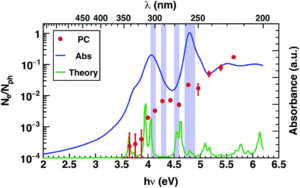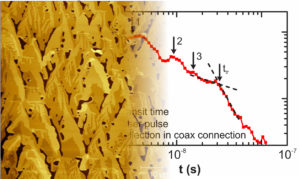We have published the results of a study of the effect of 1-pyrenesulfonicacid sodium salt (1-PSA), tetracyanoethylene (TCNE) and tetrafluoro- tetracyanoquinodimethane (F4-TCNQ) on charge transport properties of reduced graphene oxide (RGO) is examined by measuring the transfer characteristics of field-effect transistors and co-planar time-of-flight photocurrent technique. Evidence of p-type doping and a reduction of mobility of electrons in RGO upon deposition of these materials is observed. Time-resolved photocurrent measurements show a reduction in elec- tron mobility even at submonolayer coverage of these materials. The variation of transit time with different coverages reveals that electron mobility decreases with increasing the surface coverage of 1-PSA, TCNE and F4- TCNQ to a certain extent, while at higher coverage the electron mobility is slightly recovered. All three molecules show the same trend in charge carrier mobility variation with coverage, but with different magnitude. Among all three molecules, 1-PSA acts as weak electron acceptor compared to TCNE and F4-TCNQ. The additional fluorine moieties in F4-TCNQ provides excellent electron withdrawing capability compared to TCNE. The experimental results are consistent with the density functional theory calculations. Click here for the full publication.
Archives
- May 2025
- July 2024
- March 2024
- August 2023
- June 2023
- November 2021
- April 2021
- March 2021
- January 2021
- December 2020
- September 2020
- May 2020
- December 2018
- November 2017
- September 2017
- August 2017
- March 2017
- January 2017
- October 2016
- June 2016
- October 2015
- March 2015
- October 2014
- April 2014
- January 2014
- June 2013
- May 2013
- January 2013
- September 2012
- July 2012
- June 2012


